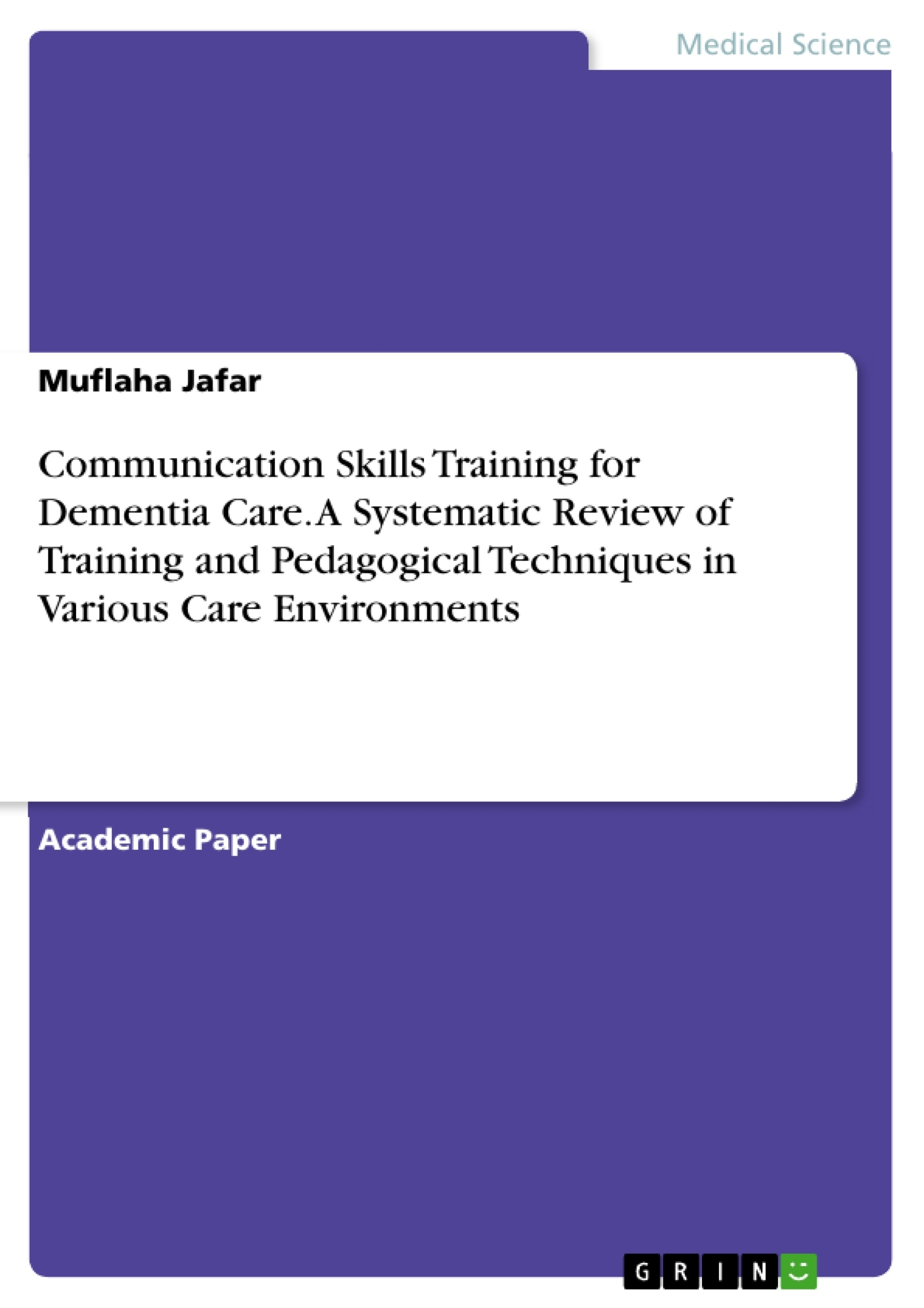The aim of this systematic review is the evaluation of the effectiveness of the interventions regarding communication between both the carer as well as the patient suffering with dementia. Data was found through different search engines, mainly PubMed, MEDLINE, Scopus and Ovid. Research was done based on PRISMA guidelines. Almost 3,478 studies were extracted based on the titles and articles. While upon scrutiny only 9 fall under the desired data on effectiveness, efficacy and acceptability of communication intervention therapy among the dementia patients and their caregivers.
In general, training treatments alter challenging behavior or carer load. Also, acceptance levels were high. More for family caretakers than those who are licensed carers. Even though many treatments weren't backed by an unambiguous conceptual framework, person-centered care remained among the most frequently mentioned paradigms.
The study found that educational treatments improved carer understanding as well as interpersonal abilities. Successful strategies required engaged involvement from caretakers and were usually skill-based (which includes skill practice and conversation). Yet, improving the quality of life or mental health of caretakers and dementia patients may necessitate more specific treatments.
Inhaltsverzeichnis (Table of Contents)
- CHAPTER 1: INTRODUCTION
- 1.1 Scope of the Challenge: Communication
- 1.2 Direct and Indirect Impact.
- 1.3 Institutional Responses and Policy Guidelines
- 1.4 Theoretical Frameworks Guiding Current Approaches.
- 1.5 Communication Partner Training (CPT) as a Potential Solution
- 1.7 Existing Evidence and Methodological Concerns..
- 1.8 Education and Professional Development .......
- 1.9 Aims and Objectives of the Research.......
- 1.10 Studies showing the efficacy of the CPT interventions.......
- 1.11 Communication in Dementia Care: Opportunities and Challenges .........
- 1.12 The Effective Communication Dilemma......
- 1.13 Previous Interventions' Ineffectiveness
- 1.14 Existing Research Gaps..
- CHAPTER 2: MATERIALS & METHODS
- 2.1 Introduction.
- 2.2 Aims And Objectives
- 2.3 Hypotheses...
- 2.4 Search strategy and Screening.
- 2.5 The search String, Keywords and the Boolean Operators..
- 2.6 Inclusion and Exclusion Criteria:
- 2.7 Data collection process.
- 2.8 Quality Appraisal.
- CHAPTER 3: RESULTS.
- 3.1 Summary of the whole systematic review conducted
- 3.2 Summary of the studies involved.
- CHAPTER 4: DISCUSSION.
- 4.1 Heterogeneous Methods for Treating Dementia: Exposing the Effects of Cognitive\nInterventions.
- 4.2 The primary focus of communication partner training (CPT) for caretakers of the elderly\nis family structures…………………………….
- 4.3 Encouraging Patients to Participate Actively in CPT Design
- 4.4 Views from Participants: Qualitative Reflections on Intervention Elements ………………………………
- 4.5 The Behavior Change Wheel (BCW) model..
- 4.6 Increasing Productivity with Customer Participation: The Interaction Pyramid Method
- 4.7 Realism-Based Approaches to Dementia Care: Overcoming Difficulties
- 4.8 Crucial Function of Therapy Duration: Dissecting Effectiveness in Research on Dementia
- 4.9 Limitations..........\n
Zielsetzung und Themenschwerpunkte (Objectives and Key Themes)
This systematic review aims to evaluate the effectiveness of communication interventions for dementia patients and their caregivers. It analyzes the impact of training programs on improving communication, understanding, and coping mechanisms for both parties involved in the care process.
- The efficacy of communication partner training (CPT) interventions for dementia care.
- The impact of CPT on challenging behavior and caregiver load.
- The role of person-centered care in communication interventions.
- The importance of skill-based training approaches in improving communication.
- The effectiveness of various pedagogical techniques in different care environments.
Zusammenfassung der Kapitel (Chapter Summaries)
Chapter 1 introduces the challenges of communication in dementia care, highlighting the impact on both patients and caregivers. It explores existing theoretical frameworks and policy guidelines related to communication interventions. The chapter concludes by outlining the research aims and objectives, focusing on the effectiveness of communication partner training (CPT) programs.
Chapter 2 delves into the methodology of the systematic review, outlining the search strategy, inclusion and exclusion criteria, and data collection process. It also provides a detailed explanation of the quality appraisal methods used to evaluate the included studies.
Chapter 3 presents the results of the systematic review, summarizing the findings across various studies. The chapter focuses on the effectiveness of different communication intervention strategies, including their impact on challenging behavior, caregiver load, and the acceptance of these interventions by both patients and caregivers.
Chapter 4 discusses the findings of the systematic review, examining the heterogeneous methods for treating dementia and the importance of family structures in CPT interventions. The chapter explores the role of patient participation in CPT design, qualitative reflections on intervention elements, and various theoretical models used in dementia care, such as the Behavior Change Wheel and the Interaction Pyramid Method. It also analyzes the importance of therapy duration and discusses the limitations of the study.
Schlüsselwörter (Keywords)
Communication partner training (CPT), dementia, person-centered care, systematic review, communication interventions, caregiver training, dementia care, communication skills, behavioral change, intervention effectiveness, care environment, family care, professional care, pedagogical techniques, caregiving burden.
- Quote paper
- Muflaha Jafar (Author), 2023, Communication Skills Training for Dementia Care. A Systematic Review of Training and Pedagogical Techniques in Various Care Environments, Munich, GRIN Verlag, https://www.grin.com/document/1441792



